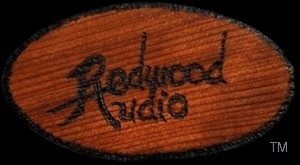From Our Shop
DIY Resources
Company Info
Have we inspired you to build a guitar? Great! In time, we will begin collecting the best tips and practical advice into tutorials of our own making. For now, the following reference and resources from around the web should be a good start for the budding luthier. Our experience has been that the best wood working advice comes from combining the wisdom across multiple sources with your own experiences. So take your time with each step, read a lot and always be open to learning - you can't over plan your project, but you must also be ready to adapt to the with the piece as it takes life.
Collected Suppliers
Stewart MacDonald - StewMac really is a one-stop-shop for everything you need with "reasonable" prices, honest reviews, quick shipping and easy navigation.
Luthier's Mercantile International - LMI is also a good one-stop-shop. They seem to have some more extensive wood options and more exotic (custom) parts than StewMac.
Gilmer Wood Company - The prices are not for the faint of heart... But then again, you are browsing exquisite one of a kind exotic woods - so that should be what you expect. (The Redwood in our 001 was sourced here and we could not be more happy with the wood and service we received).
Oregon Wild Wood (tonewood.com)- This is a slightly smaller site with a reasonable selection, check back often for the times when they have a fresh batch of their more exotic species such as Myrtlewood - the best sets go quickly! They have specific companion sites for mandolin and ukulele as well.
Allparts - Allparts is more of an aftermarket hardware supplier focused on guitar, bass and amp parts for luthiers doing repairs or modifications. Though there are some good deals on parts you might need for a full build as well.
Warmoth - OK, maybe you did not want to start from complete scratch... Warmoth has amazing custom bodies and necks as well as straight replacements for classic models. Should be more than enough of a jump off point.
Other Venders we like: Amazon, Ant Hill Music, Digikey, Graphtech, GuitarPartsResource, Sweetwater etc. And of course - local music shops and hardware stores.
(As a luthier, we can't recommend a friendly relationship with your local music shop enough! Buy some things, talk to the staff and play the instruments - it is a great way to see what you like, don't, or just get inspired)
Web Reference
Both of the major suppliers also have extensive and valuable online resources for luthiers.
The StewMac resources, can sometimes blend with a sales pitch for a custom tool - but the techniques and demonstrations by the luthiers remain valuable even without their tools.
Wiring Diagrams, how-to and tool instructions
TradeSecrets Video Tutorial Series (Dan Erlewine)
Stewmac Youtube Channel (good luthier tips)
The LMI resources are harder to find on the old (and current) site - but they come up regularly in searches on related topics and are very complete and trustworthy explanations. (all links jump to the beta site)
Luthier 101 (Good summary info)
Tutorial Videos (Robert O'Brien of founder of Lutherie Program RRCC)
Other highlights from their archive: Finishing Options, Binding and Purfling Tips, Side Bending.
You can also find a good collection of resources through the Guild of American Luthiers or Frets. But for more active support, you might try one of these fine forums:
13th Fret -Seems to see only light activity these days, but some great info is hidden within.
Musical Instrument Makers Forum - One of the more active forums related to building guitars.
Official Luthiers Forum - is a reasonably active group (if you can get past those handy adds on the top of the page! - scroll down)
Recommended Reading
Acoustic (steel string):
We will update after completing a project or two, but for acoustics we currently like the combination of two books:
1. Build Your Own Acoustic Guitar, by a skilled luthier in the UK, Jonathan Kinkead (published by Hal Leonard Corporation, 2004 - ISBN:9780634054631). This provides a lovely pictures, overview and plans for the construction of their Kingsdown guitar. But for a first build, it will be lacking some details you may need.
2. Guitar Making: Tradition and Technology, by William Cumpiano and Jonathan Natelson (published by Chronicle Books, 1994, ISBN:0811806405 ) - fills that gap and then some. This book is very detailed with cleanly drawn illustrations / photos - if not a touch hard to follow start to finish. Imagine the full notebook of the best student you know following their apprenticeship with a skilled luthier. (Covers construction of both steel folk and classical guitars)
Classical:
We would again recommend the notes in Guitar Making: Tradition and Technology (see above). But for lovely illustrations and some additional inspiration - Classical Guitar Making: A Modern Approach to Traditional Design, by John Bogdanovich (Sterling Publishing Company, 2007, ISBN:1402720602 ) is a wonderful read.
Electric / Semi-Acoustic:
For a first book on electric guitars and construction in general - Building Electric Guitars, by Martin Koch (published by Koch Verlang, 2001 - ISBN:3901314075). It has good coverage on all the basics you need, some good tips and practice. There are a few sections which take some re-reads to understand what was meant.
Design Reference/Other:
For design inspiration it is always good to understand the history of the craft. There are many places to look for this. One of the ones we like is Guitars Illustrated, by Terry Burrows (Crown Publishing, 2011, ISBN:0823082695). It has all the historic models from all the major builders including pull-out posters showing the evolution of design within each builder.
For inlay work, there may be no better inspiration than the work of Grit Laskin, in The Guitarmaker's Canvas (Hal Leonard Corporation, 2003, ISBN:0879307560). We challenge you to read through this book without buying a jeweler's saw!
